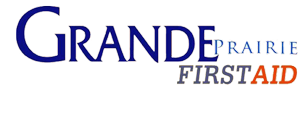Cold sores, sometimes referred to as fever blisters, are small red blisters that are found on the face. These fluid filled blisters often appear in multiples and patched over one area of the face, usually on or around the lips. Generally, cold sores pop open after a few days resulting to the leakage of clear fluid and a scab that is present only for a few days. The normal period for healing is usually a few days to two weeks. Although infrequent, the most common complication that can arise from cold sores is dehydration.
Cold sores are caused by the herpes simplex virus (HSV). It is different from other common viral infections because symptoms do not usually manifest immediately after the infection. It is usually triggered by something else, which will be discussed later. HSV has two strains, Type 1 and Type 2. Type 1 is what causes the cold sores and is transmitted through oral secretions or presence of sores on the skin. Alternatively, Type 2 is what leads to genital herpes. Unfortunately, this infection remains for one’s lifetime.
Causes of Cold Sores
As previously mentioned, symptoms of HSV, such as cold sores remain dormant unless triggered by conditions such as:
- Viral infections such as those that cause the common cold and influenza, among others
- AIDS, chemotherapy medications or steroids, and other conditions that lead to immunosuppression
- Physical or emotional stress
- Fatigue
- Trauma
- Hormonal changes, such as during menstruation
- Weather exposure, such as sunlight and windy
Associated Symptoms of Cold Sores
Cold sores are symptoms of HSV Type 1. The following associated symptoms may also manifest:
- Collection of small, red blisters that are found on the face, usually on the lips, chin, nostrils or cheeks
- Develops a crust a few days after bursting open
- Crust dries off and falls off usually after 10 days
- Burning sensation of the face
- Painful swallowing
- Sore throat
- Fever
- Swelling of the lymph nodes, especially on the neck
- Fatigue
- In severe cases, dehydration
First Aid Management for Cold Sores
HSV is not curable. Although the virus is there to stay in the body, several first aid tips can be done at home to ease the pain and relieve of discomfort. Enroll in First Aid Courses to learn first aid tips on how to handle basic everyday troubles, such as sores. The following can be done on cold sores:
- The blisters in the mouth should not be popped to avoid an infection from ensuing. Do not pick the scabs to avoid scars from forming.
- Apply topical antiviral creams on the blisters. Povidone-iodine ointments may also be applied. Apply these as soon as the cold sores appear.
- Apply ice on the blisters to ease the pain felt. Ice should not be applied directly on the skin. Instead, wrap it around a towel or any piece of cloth before applying.
- Apply cold sore patches on the lesions.
Cold sores are small, fluid-filled blisters that are caused by Herpes Simplex Virus Type 1 and are usually found on the lips.

